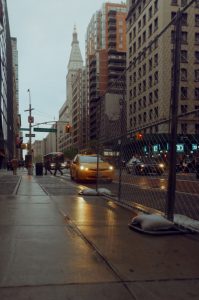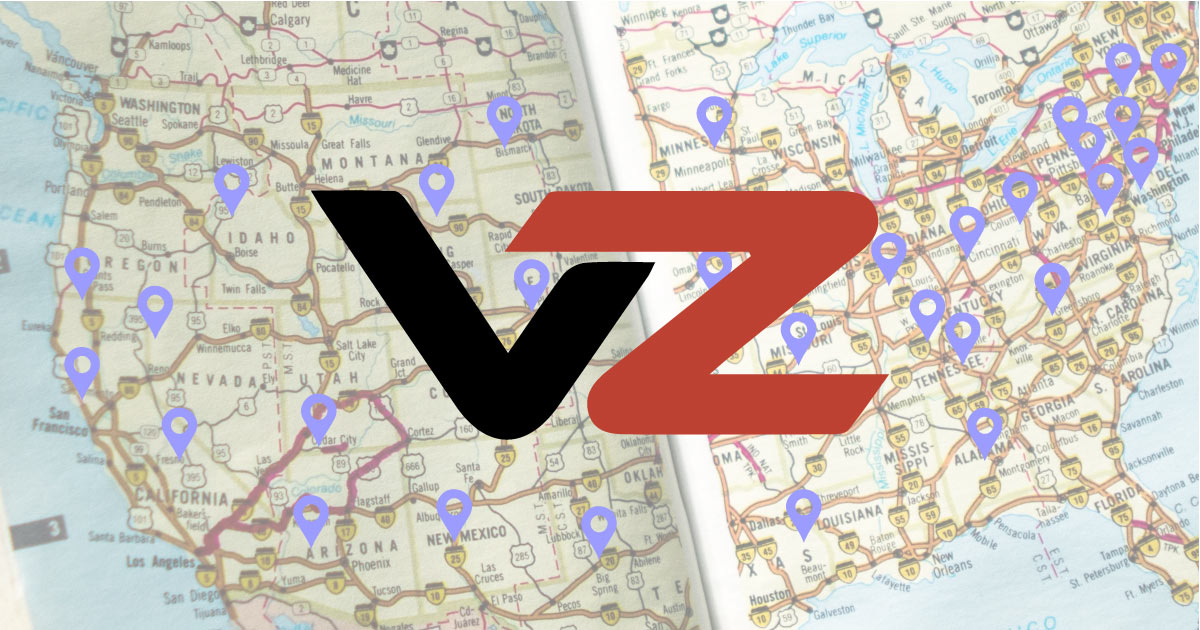The New York City Department of Transportation has its own Vision Zero initiative. The agency wants to see if technology can help reduce deaths where the rubber meets the road and crosswalks. Back in 2014, NYC began its own Vision Zero study program to reduce the number of fatalities and injuries resulting from traffic crashes. One of the major ongoing initiatives has been the citywide speed limit reduction from 30 mph to 25 mph. According to the National Highway Transportation Safety Administration, speeding was a factor in more than one in four traffic deaths in the Big Apple. Human factors were the critical cause in about 94% of all crashes, while vehicle-related factors applied only to about 2% of all crashes. In other words, as much as people try to pass the buck, the blame usually isn’t “My brakes failed.” But it’s still imperative that your vehicle is in the best working condition it can be in, and that includes good tires and brakes. In Manhattan, 73% of all crash fatalities involved pedestrians, compared with 14% nationwide. People over the age of 65 make up 12% of the population in NYC but about 33% of all pedestrian fatalities. In addition, the primary reason for crash-related deaths of children under 14 was from being struck by a vehicle.
Can Tech Help?
 NYCDOT’s planned deployment provides an ideal opportunity to evaluate connected vehicle technology and applications in tightly spaced intersections typical of a dense urban transportation system. It is anticipated to be the largest connected vehicle technology deployment to date. The NYCDOT Connected Vehicle CV Pilot Deployment Program area covers three distinct areas in the boroughs of Manhattan and Brooklyn. Approximately 5,800 cabs, 1,250 MTA buses, 400 commercial fleet delivery trucks, and 500 NYC vehicles that frequent these areas will be fit with connected vehicle technology. Using dedicated short-range communications, the deployment will include approximately 310 signalized intersections for vehicle-to-infrastructure (V2I) technology. As a city bustling with pedestrians, the pilot will also focus on reducing vehicle-pedestrian conflicts with in-vehicle pedestrian warnings and an additional V2I/I2V project component that will equip about 100 pedestrians with personal devices that assist them in safely crossing the street. We’ll be eager to see the results, but there is technology that can help your vehicles today. Eventually, we imagine a standard being developed out of NYC’s research that has pedestrian information beamed out from smartphones and communicating to vehicles. The future is not that far off, but we still have obstacles to resolve before a vehicle can automatically jump on the brakes — especially if technology can predict an impending pedestrian crash by data provided by the walker’s smartphone.
NYCDOT’s planned deployment provides an ideal opportunity to evaluate connected vehicle technology and applications in tightly spaced intersections typical of a dense urban transportation system. It is anticipated to be the largest connected vehicle technology deployment to date. The NYCDOT Connected Vehicle CV Pilot Deployment Program area covers three distinct areas in the boroughs of Manhattan and Brooklyn. Approximately 5,800 cabs, 1,250 MTA buses, 400 commercial fleet delivery trucks, and 500 NYC vehicles that frequent these areas will be fit with connected vehicle technology. Using dedicated short-range communications, the deployment will include approximately 310 signalized intersections for vehicle-to-infrastructure (V2I) technology. As a city bustling with pedestrians, the pilot will also focus on reducing vehicle-pedestrian conflicts with in-vehicle pedestrian warnings and an additional V2I/I2V project component that will equip about 100 pedestrians with personal devices that assist them in safely crossing the street. We’ll be eager to see the results, but there is technology that can help your vehicles today. Eventually, we imagine a standard being developed out of NYC’s research that has pedestrian information beamed out from smartphones and communicating to vehicles. The future is not that far off, but we still have obstacles to resolve before a vehicle can automatically jump on the brakes — especially if technology can predict an impending pedestrian crash by data provided by the walker’s smartphone.
Can We Protect Pedestrians Today?
 We absolutely can protect pedestrians today using technology that can be integrated into your current vehicle. First, backovers need to be a thing of the past. All new passenger vehicles must include a backup camera integrated into the car. However, your current car or truck can be retrofitted with either video solutions or sensors that will provide an audible beep if something is behind your vehicle. If you have a fleet of vans or trucks in an urban environment, this technology should be mandatory. If you are a business owner, you have a responsibility to not just reduce liability, but protect the public. To protect those vulnerable in front of the windshield, companies such as Mobileye can alert drivers about impending pedestrian collisions. The Mobileye system sends a visual and audio alert before an imminent collision with a pedestrian or cyclist, giving the driver time to react. The time-to-collision is calculated and when it drops below two seconds, an audible warning is generated. This will give the operator time to react and brake.
We absolutely can protect pedestrians today using technology that can be integrated into your current vehicle. First, backovers need to be a thing of the past. All new passenger vehicles must include a backup camera integrated into the car. However, your current car or truck can be retrofitted with either video solutions or sensors that will provide an audible beep if something is behind your vehicle. If you have a fleet of vans or trucks in an urban environment, this technology should be mandatory. If you are a business owner, you have a responsibility to not just reduce liability, but protect the public. To protect those vulnerable in front of the windshield, companies such as Mobileye can alert drivers about impending pedestrian collisions. The Mobileye system sends a visual and audio alert before an imminent collision with a pedestrian or cyclist, giving the driver time to react. The time-to-collision is calculated and when it drops below two seconds, an audible warning is generated. This will give the operator time to react and brake.
Pedestrians Are the Most Vulnerable, But They Can Be Protected
New York City (and the rest of us) know that pedestrians are the most vulnerable in a collision with a vehicle. Technology is being introduced and studied daily to implement the technologies that will involve V2V (vehicle-to-vehicle) and V2I (vehicle-to-infrastructure) elements to help walkers get where they need to go. But if you or your vehicles operate in urban areas, aftermarket pedestrian avoidance technologies will help reduce accidents, limit exposure and perhaps save a life. Check out the solutions at your local affiliated Vision Zero Automotive Network mobile electronics specialist that can help you integrate this future technology into your vehicles today.


